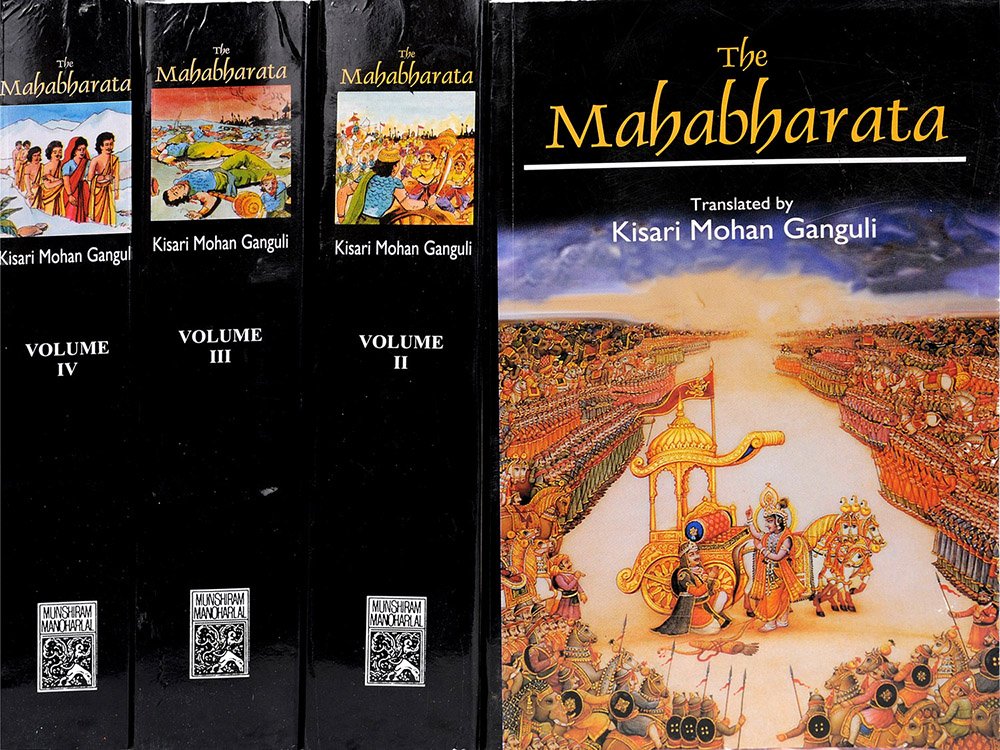Mahabharata (English)
by Kisari Mohan Ganguli | 2,566,952 words | ISBN-10: 8121505933
The English translation of the Mahabharata is a large text describing ancient India. It is authored by Krishna-Dwaipayana Vyasa and contains the records of ancient humans. Also, it documents the fate of the Kauravas and the Pandavas family. Another part of the large contents, deal with many philosophical dialogues such as the goals of life. Book...
Section CCXVII
Markandeya continued,
'O ornament of Kuru’s race, he (Angiras) who was the third son of Brahma had a wife of the name of Subha.
Do you hear of the children he had by her.
- His son Vrihaspati, O king, was very famous, large-hearted and of great bodily vigour. His genius and learning were profound, and he had a great reputation as a counsellor.
- Bhanumati was his first-born daughter. She was the most beautiful of all his children.
- Angiras’s second daughter was called Raga.[1] She was so named because she was the object of all creature’s love.
- Siniwali was the third daughter of Angiras. Her body was of such slender make that she was visible at one time and invisible at another; and for this reason she was likened to Rudra’s daughter.
- Archismati was his fourth daughter, she was so named from her great refulgence.
- And his fifth daughter was called Havishmati, so named from her accepting havis or oblations.
- The sixth daughter of Angiras was called Mahismati the pious.
- O keen-witted being, the seventh daughter of Angiras is known by the name of Mahamati, who is always present at sacrifices of great splendour, and that worshipful daughter of Angiras, whom they call unrivalled and without portion, and about whom people utter the words kuhu kuhu wonder, is known by the name of Kuhu.'
Footnotes and references:
[1]:
Raga means love.
Conclusion:
This concludes Section CCXVII of Book 3 (Vana Parva) of the Mahabharata, of which an English translation is presented on this page. This book is famous as one of the Itihasa, similair in content to the eighteen Puranas. Book 3 is one of the eighteen books comprising roughly 100,000 Sanskrit metrical verses.
FAQ (frequently asked questions):
Which keywords occur in Section CCXVII of Book 3 of the Mahabharata?
The most relevant definitions are: Angiras, kuhu, Markandeya, Kuru, Brahma, Subha; since these occur the most in Book 3, Section CCXVII. There are a total of 14 unique keywords found in this section mentioned 21 times.
What is the name of the Parva containing Section CCXVII of Book 3?
Section CCXVII is part of the Markandeya-Samasya Parva which itself is a sub-section of Book 3 (Vana Parva). The Markandeya-Samasya Parva contains a total of 50 sections while Book 3 contains a total of 13 such Parvas.
Can I buy a print edition of Section CCXVII as contained in Book 3?
Yes! The print edition of the Mahabharata contains the English translation of Section CCXVII of Book 3 and can be bought on the main page. The author is Kisari Mohan Ganguli and the latest edition (including Section CCXVII) is from 2012.
